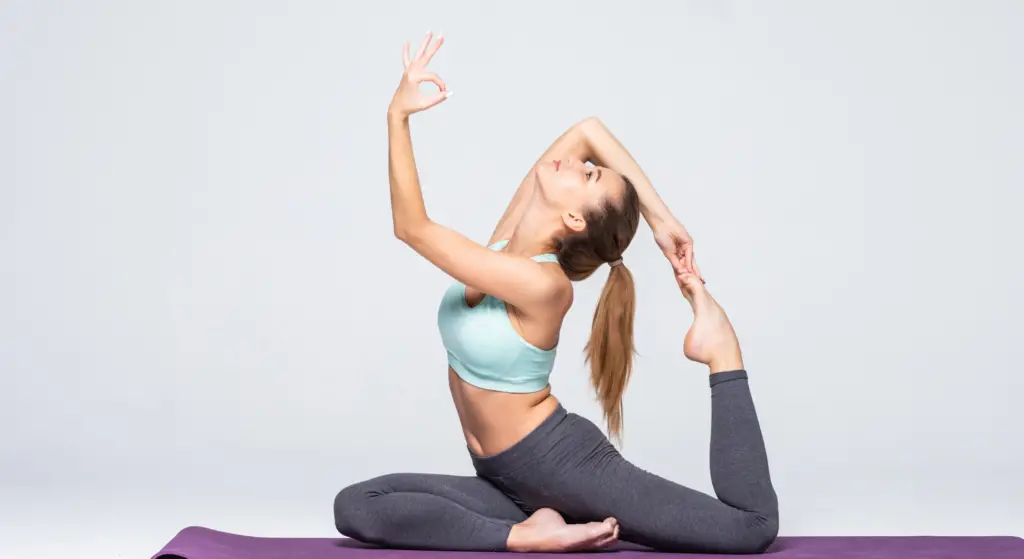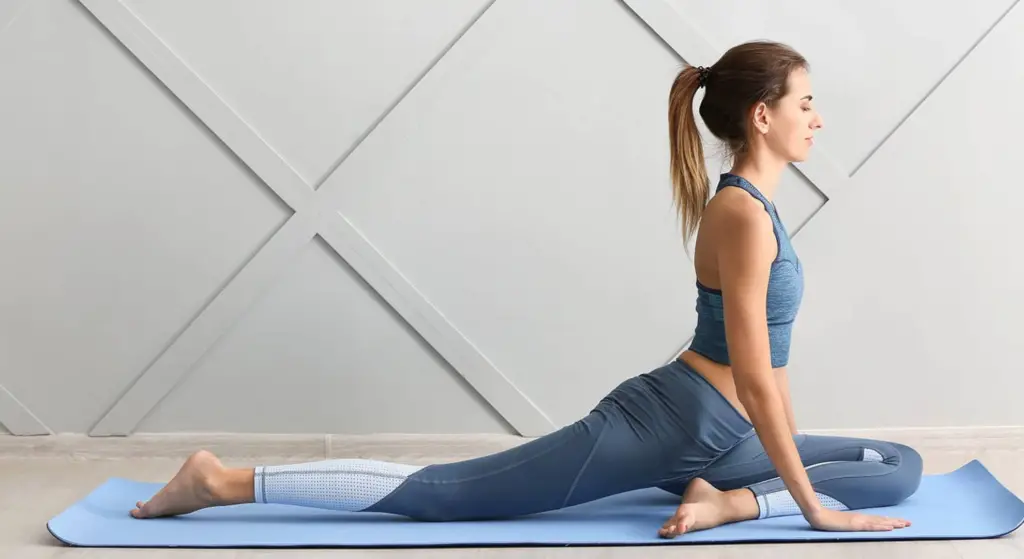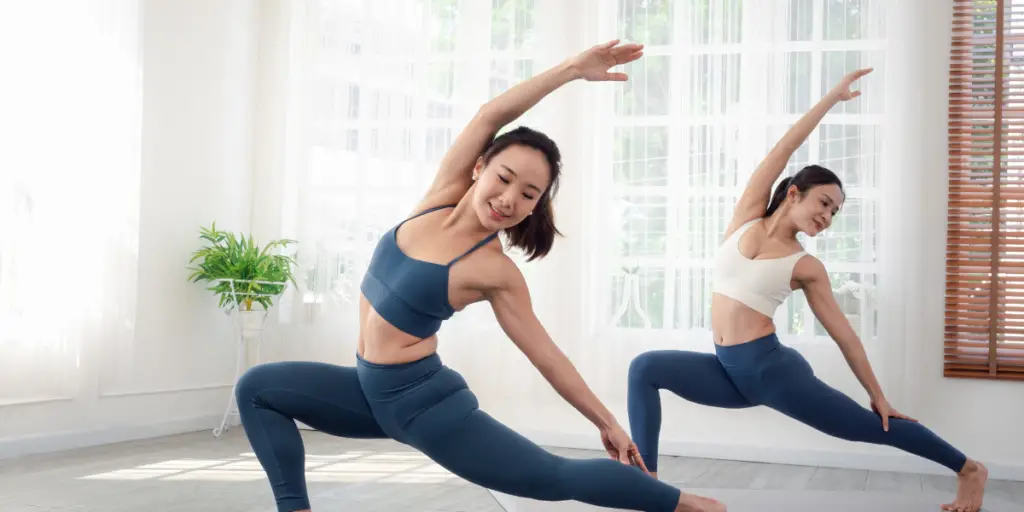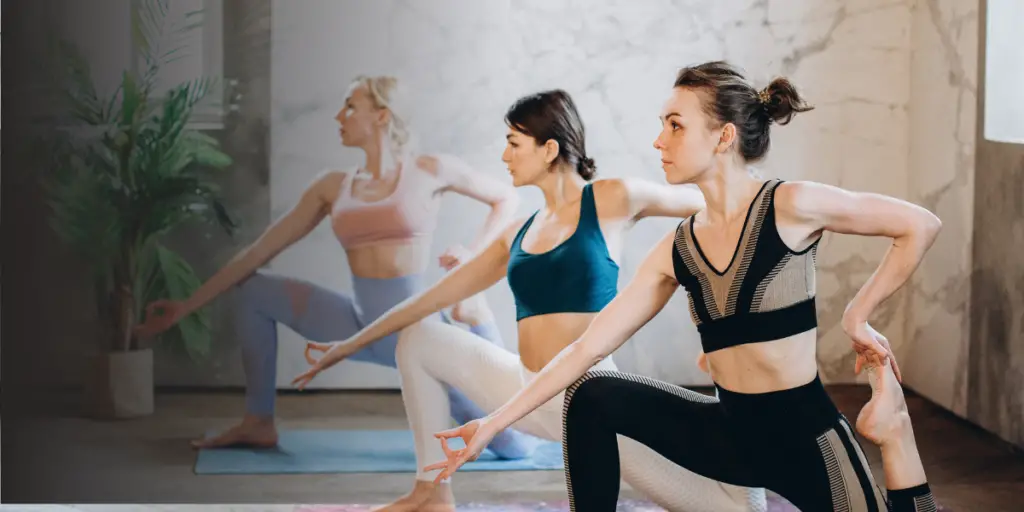
Somatic yoga is a contemporary style of yoga that brings a mindful, therapeutic lens to traditional hatha yoga. Balancing gentle physical movement with breath awareness and inner exploration, somatic yoga invites practitioners to tune into their body’s subtle sensations. Through a curious yet non-judgmental approach, this embodied practice guides one into greater alignment, mobility, and stress relief.
Among the principles at the heart of somatic yoga are developing inner body awareness, fostering neuroplasticity, releasing habitual muscular patterns, and establishing a deeper mind-body connection through interoception and proprioception. By first sensing into yoga poses or daily activities, instead of trying to immediately perfect external form, somatic yoga provides a supportive environment for releasing built-up tension and fostering self-awareness.
As yogis rediscover the intuitive intelligence of the body through somatic cues, they tap into an incredible source of transformation and healing potential. Whether practicing on a yoga mat, exploring therapy options, or integrating principles into everyday life, somatic yoga offers a doorway into living with greater balance, empowerment, and ease. In many ways, it encourages students to become their own yogis – to cultivate presence, listen deeply, move consciously, and unravel the stories held within the body.
Table of Contents
History and Origins
The origins of somatic movement can be traced to the 1970s work of renowned somatic pioneer Thomas Hanna, who coined the term “somatics” to describe therapeutic techniques using inner focus and sensory awareness to relieve pain and restricted mobility. Somatic methods recognize that the human body and mind are deeply interlinked and that visiting the subtle signals beneath conscious awareness can lead to profound healing.
Influenced by somatic education models, including the Feldenkrais Method, Alexander Technique, and Rolfing Structural Integration, yoga teachers began integrating principles of inner attunement, mindful motion, and body wisdom into their offerings. Over time, a more formal style of “Somatic Yoga” emerged, fusing ancient yogic insight with contemporary therapeutic movement techniques.
Key voices like Eleanor Criswell and Don Hanlon Johnson further developed the philosophical foundations of somatics – exploring concepts like neuroplasticity, interoception, and tapping into the body’s generative potential. Other influencers including Bonnie Bainbridge Cohen’s Body-Mind Centering brought embodied anatomy approaches, while Emilie Conrad’s Continuum Movement highlighted the value of wave-like motion and undoing habitual holdings in connective tissue.
Together, these diverse perspectives helped contextualize yoga as a practice going far beyond perfecting physical postures – one capable of cultivating presence, self-trust, and profound mind-body integration.
Distinctions from Traditional Yoga
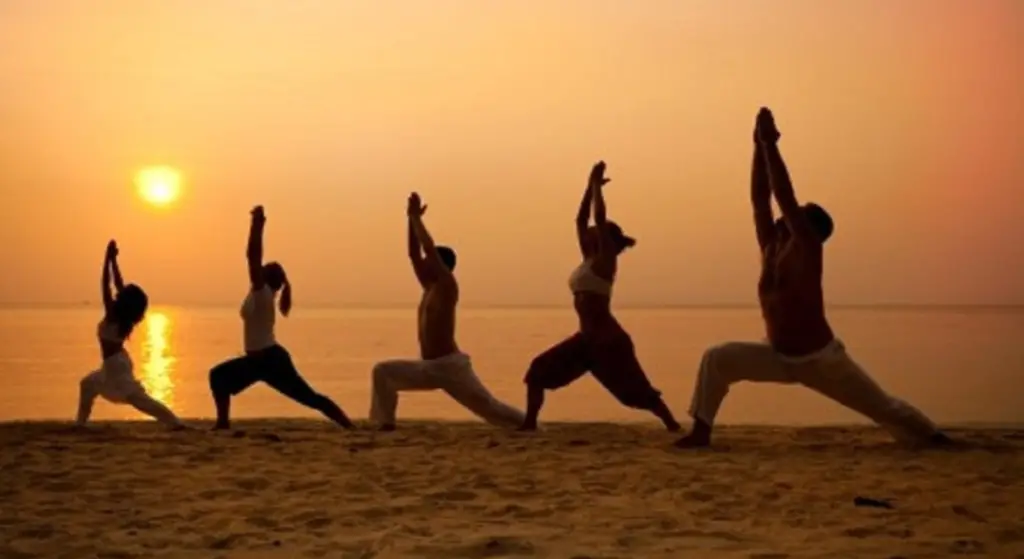
While sharing common historical roots, somatic yoga diverges from conventional yoga in several key ways:
Inner Exploration Over External Form
Rather than offering rapid-paced flows focused on achieving picture-perfect alignment, somatic yoga slows down movement to allow greater interoceptive awareness of underlying sensation – welcoming intuitive shifts from moment to moment.
Guiding Not Correcting
Somatic yoga teachers avoid aggressive physical adjustments, instead using invitational language to draw attention to areas of holding or imbalance. This empowers students to become active agents in their own healing.
At Your Own Pace
By moving according to the wisdom of the nervous system, somatic classes do not require practitioners to push into pain or discomfort. There is also plenty of time to rest between explorations.
Less Props & Cues
Practitioners cultivate presence and bodily awareness instead of relying on external tools like yoga blocks. Instructions allow space for personal adaptation based on what feels right.
Trauma-Informed
With sensitivity to past emotional, physical, or neurological trauma, somatic yoga teachers emphasize empowerment and choice when intuitively sensing new patterns of movement or stillness.
Exploration Over Expectation
Rather than providing detailed alignment cues for traditional asanas, poses are springboards for inner research. Through emerging experiences, the teacher offers invitations to explore novel sensations.
By allowing the ancient wisdom of yoga to dialogue with and be informed by contemporary therapeutic approaches, somatic yoga circumvents tendencies towards perfectionism, comparison, and disconnect from internal experience that can arise in mainstream yoga spaces.
Core Principles & Philosophies
Somatic yoga draws upon several key concepts from neuroscience, psychology, and somatics:
Interoception – The perception of stimuli originating within the body related to one’s physiological state. Enhancing sensitivity to signals about muscle tension, hunger, emotion, and pain can lead to self-regulating choices.
Proprioception – Awareness of body position, location, and coordination in space. Improved proprioception helps avoid injury and guides functional, balanced movement.
Exteroception – The processing of external sensory stimuli through faculties like sight, smell, touch, and hearing. Mindfulness during yoga helps manage overwhelming environmental input.
Neuroplasticity – The brain and nervous system’s capacity to create new neural connections and pathways in response to experience. Somatics leverages neuroplasticity to undo restrictive movement and thought patterns.
Body Wisdom – The innate capacity of the body to relax into optimal health when the conscious mind steps back from trying to control it. somatic yoga aims to tap into body wisdom.
Psycho-Physical Feedback Loops – The reciprocal links between the mind, emotions, and physical state where changing one starts to positively shift the other. Somatics uses this phenomenon to reduce negative signaling.
Beyond specific somatic theories, philosophies like Buddhist mindfulness and yoga make up the conceptual scaffolding – highlighting concepts of radical self-responsibility, the possibility of awakening, unity consciousness, and aligning individuals with the universal flow.
By tapping into the body’s subtle intelligence while relaxing outmoded conditioning, the potential for elevated states of freedom and vitality enters one’s experiential reality.
Experiencing a Somatic Yoga Class
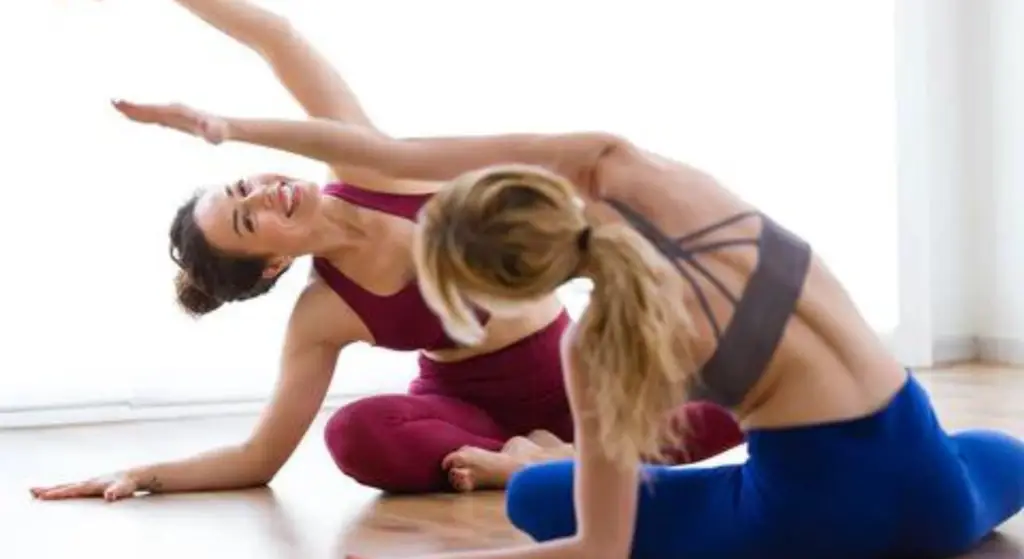
Attending a somatic yoga class typically involves:
Check-In – The teacher will often begin with a short visualization, body scan, or discussion to attune to the present moment and notice habitual patterns.
Slow, Mindful Movement – Students are guided through sequences of gentle stretches, mobilizations, and postures at an undulating pace congruent with the breath.
Inner Tuning – Plenty of space between postures shifts focus away from perfecting form towards feeling, intuition, and bodily needs.
Somatic Cues – Inviting language draws attention to varied physical sensations, energy, emotions, and thoughts enabled by mindful movement.
Integration – Resting poses and closing journaling/meditation consolidate new neural connections formed during the explorative flow. Class ends calmly.
Unlike athletic flows focused on cardio, flexibility, or strength building, somatic yoga permits the system to gently toggle between sensations of alertness and restoration while avoiding any sense of urgency. By interweaving physiological and psychological elements into a holistic tapestry, students contact profound layers of themselves.
Science of Yoga: Understand the Anatomy and Physiology to Perfect Your Practice
Benefits of Regular Practice
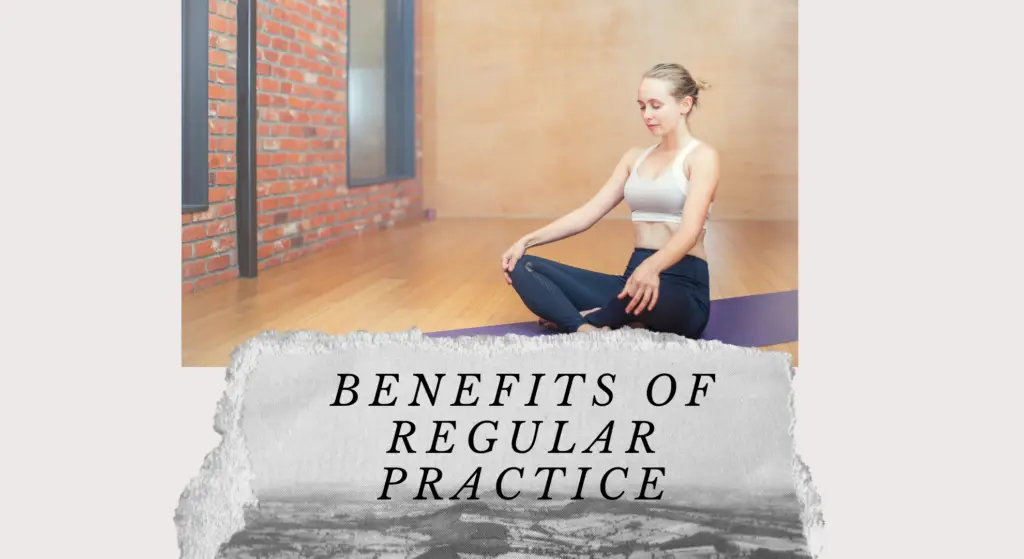
Modern research into somatics confirms what yogis have proclaimed for millennia – that slowing down and sensitizing attention to detail before taking action can enhance grace.
In uniting ancient practice with contemporary science, consistent somatic yoga offers well-documented upsides:
Reduced Muscle Tension & Body Pain
Tuning into areas of unnecessary gripping and bracing permits students to breathe into restricted spaces, addressing aches and releasing knots.
Enhanced Interoceptive Awareness & Emotional Intelligence
Noticing subtle signals and reactions inside the body builds skills in emotional self-regulation helping manage overwhelming urges or feelings.
Decreased Perceived Stress & Anxiety
By downregulating the nervous system and exiting chronic fight-or-flight, somatic classes provide lasting feelings of calm, clarity and emotional resilience.
Greater Ease of Movement & Body Control
Exploring unique ways to supplant rigid, limited motion with flowing, dynamic engagement enhances mobility while preventing and recovering injury.
Trauma Recovery & Neuroplastic Healing
Somatic yoga sends signals to the primal brain that it is safe to unwind defensive postures and process difficult experiences through new empowered perspectives.
Improved Posture & Body Mechanics
Guiding awareness towards areas of imbalance and bracing invites realignment, taking pressure off overworked muscle groups and relaxing the skeleton.
Strengthened Mind-Body Connection
Repeatedly bridging conscious intentions, physical changes, and energetic shifts builds neural pathways for enhanced psychosomatic communication and a sense of embodiment.
Holistic Stress Management
Cumulative effects of greater body awareness, flexibility, emotional coping, pain reduction, balanced muscle tone, feelings of agency over health and self-trust generate vastly decreased perceptions of stress.
Lifelong Progression
Ongoing somatic yoga provides continual opportunities for novel movement, adapting practice to one’s evolving physical and psychological landscape across the lifespan.
Building a Personal Somatic Yoga Practice
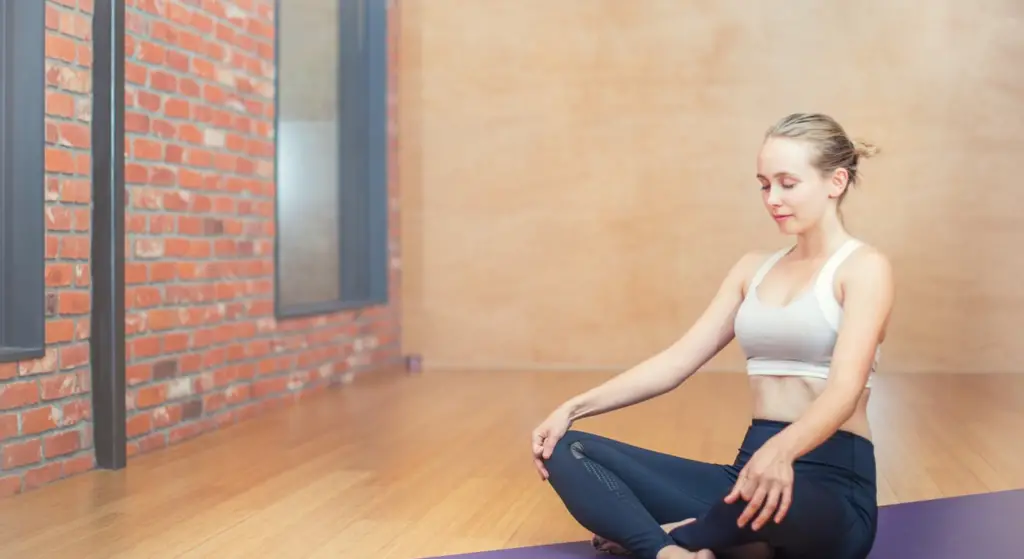
While attending occasional drop-in classes can offer tremendous value through exposure to skilled somatic teachers, building a consistent personal practice is key for meaningful change.
Here are some steps for cultivating an accessible yet potent home-based somatic yoga ritual:
Dedicate Sacred Space
Optimize the safety and spaciousness of your immediate environment by tidying clutter, diffusing calming essential oils like lavender, playing soft instrumental music, and ensuring privacy during practice.
Harvest Inner Resources
Take time before moving to consciously reconnect with personal intentions, soulful inspiration, or spiritual sources of meaning like heart-centered mantras – gathering authentic reasons for practice.
Start Slow & Small
Especially when beginning, limit sessions to 20-30 minutes with simple repetitive sequences focused on just 3-5 fundamental mind-body techniques – prioritizing quality presence over quantity achievement.
Tune-In First
Rather than visually mimic complex postures, first tilt attention inwards – noticing areas of ease or tension, consciously relaxing tight spots, and guiding movement from sensations.
Emphasize Exhalations
Slow, smooth longer exhales help trigger the relaxation response, maximize lymphatic drainage and detoxification, reduce rigidity, and cultivate embodiment. Pause after exhaling before mindfully inhaling.
Get Creatively Curious
Experiment guided by fascination versus expectations – tinkering with subtle variations in bodily feedback, chasing novel pockets of sensation, leaning towards edges of intensity without forcing.
Rest & Integrate
Balance dynamic movement intervals with ample stillness reprieves lying on the back, focusing panoramically on bodily regions seemingly buzzing with novel activation.
Journal Progress
Document experiences, breakthroughs, embodied insights, and lingering questions that arise during somatic sessions to make teachings tangible while reinforcing neural connections.
When sculpting a personal practice, maintain a beginner’s mind – letting go of preconceptions to sink into direct experience. What surfaces may surprise you? With consistency and courage to compassionately confront inner blockages, somatic yoga’s versatility can unleash incredible transformations.
Incorporating Concepts Into Daily Living
While consistent practice on a mat undoubtedly accelerates skill building, the true fruits of somatic yoga emerge in day-to-day scenarios calling for deeper presence.
Standing in line – Attune to the sensations of weight shifting through the feet’s connection with the floor, allowing gentle swaying as tension unwinds from ankles to hips.
Washing dishes – Conduct awareness down the arms into hands, exploring the shifting pressures and temperatures of water and dishware contacting the skin.
Having a conversation – Maintain eye contact while simultaneously noticing your own emotions and allowing the chest and belly to softly expand on inhalations.
Commuting – Sense the sensations of your body making contact with the seat and relax into any arising movement like swaying.
Troubleshooting issues – When analyzing dilemmas, consciously guide breath into the abdomen, gently stretch the neck, and tune into any visceral ‘gut feelings’ pointing to an intuitive solution.
Interacting with technology – Periodically unfocus eyes to practically scan the peripheral field of vision and link slow body movement to rhythmic external stimuli like ticking clocks or ambient urban noises
Waiting in situations – Allow the lower back to round and straighten while dropping attention into the pelvis and softening discomfort by exhaling trapped energy down the legs into the ground.
Feeling overwhelmed – Stop repetitive worrying thoughts by focusing on the present-moment experience within the body and feeling feet firmly planted into the ground.
By infusing ordinary situations with somatic savviness, daily stresses become opportunities to build resilience – flexing one’s concentration, empowerment, and mindfulness muscle. With frequent rehearsal, relating to circumstances and other beings from a more open, responsive, and caring orientation becomes second nature.
Somatic Perspectives on Pain and Trauma
Both sudden traumatic incidents and repetitive cumulative stress can manifest physically as body pain or psychologically through anxiety, overwhelm, and disconnection.
Somatic yoga offers key insights into constructively working with painful patterns:
Sensations as Messengers – Rather than suppressing or distracting from discomfort, consciously meet these sensations with non-judgmental curiosity about the stories and wisdom they hold.
History Holding onto the Present – Explore the possibility of habitual neuromuscular tension patterns forming from unprocessed stressful memories which the psyche continues recreating compulsively until integration.
Safety for Expression – Pain often indicates the absence of safety. Ensure the body and psyche feel permission for authentic expression after consciously reconnecting with one’s unconditional worthiness.
Regulation Over Force – Let sensations fully arrive and subside at their own natural pace, while giving space for emotions, instead of trying to power through barriers with blunt effort.
Unburdening Layer by Layer– Imagine pain as an onion’s layers to metaphorically peel and unpack versus an enemy to conquer and destroy. Move towards ease.
Honoring Validity of All Experience – Get curious about even extreme physical discomfort or scary psychological states, temporarily embracing reality on its own terms with compassion. From acceptance, conditions organically transform.
Rather than perpetuating cycles of pain aversion, somatic perspectives extend provisional refuge by encouraging practitioners to lean into the unknown. By learning to trust in the body’s innate drive to self-regulate around homeostasis, great healing unfolds.
Final Summary
Somatic yoga interweaves ancient wakefulness practices with contemporary therapeutic movement techniques to cultivate harmony within oneself and encourage greater collective human thriving. Through systematically developing present-moment inner awareness and undoing unconscious holding patterns into unabashed full-spectrum living, liberation awaits. What limiting beliefs is your body trying to wake you up from? The wisdom is already inside you, daring your consciousness to catch up.
Is Yoga a Sport? An In-Depth Look at Yoga’s Classification, discover now
